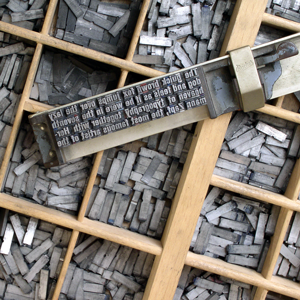Development of Print Documents
 In print, the development stage of document creation is especially crucial. This is because it is difficult to edit print material once it has been published. At the beginning of any project, there are global-level decisions that have to be made. You must be aware of the purpose of your project, the needs of your audience, and the type of material that would best fit their needs. This is the stage of work when Universal Design is most easily implemented because if you plan to use it from the beginning, it is less likely that more editions of the document will have to be published. This will save you time and money in the long run.
In print, the development stage of document creation is especially crucial. This is because it is difficult to edit print material once it has been published. At the beginning of any project, there are global-level decisions that have to be made. You must be aware of the purpose of your project, the needs of your audience, and the type of material that would best fit their needs. This is the stage of work when Universal Design is most easily implemented because if you plan to use it from the beginning, it is less likely that more editions of the document will have to be published. This will save you time and money in the long run.
Purpose
You should have some idea of the purpose of your document before the project starts simply because if there was no purpose, there would be no need for the document. Knowing the purpose behind your document will allow you to make several important design decisions. Here are some Universal Design questions to keep in mind when determining the purpose of your document.
- What is the simplest way to deliver this material?
- How can I provide an inclusive experience for everyone who will use this material?
- What is the clearest method to communicate the purpose of this document?
Audience Needs
Using Universal Design principles in the development of your print content helps keep the material audience and user-driven. Since designing universally helps reach a wider, more diverse audience, keep the following questions in mind when looking at audience needs.
- What is the target audience for this material? What are their needs and wants?
- What is the best way to design and present materials to reach that audience and its needs?
- How can the design of this document encourage wide and equitable use for all users, no matter their age, level of ability, knowledge of the language, or familiarity with the topic?
Methods
As you analyze the purpose of your content and the unique needs of your audience, it may become clear what materials are best suited to deliver your content. No matter what type of material distribution method you choose (pamphlet, manual, poster, booklet, etc.), the methods you use to communicate your content should be user-driven. Since the style of your material can give users a hint about how to interact with it, also consider the following questions when deciding on how to deliver your material.
- What is the best physical method of delivery to effectively communicate this content?
- How can I use help users easily interact with this material regardless of ability?
- Will the style of print document that best suits the target audience shun or cut off connections with possible minority audiences?